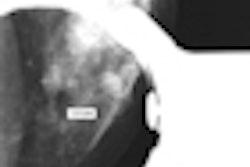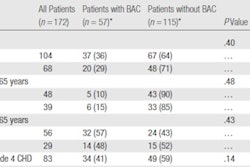Women who present with palpable breast tumors tend to be those who don't undergo annual screening mammograms, according to a new study in the March Journal of the American College of Surgeons. And these palpable tumors are larger and at more advanced stages of disease when they are discovered.
Dr. Amy Degnim of the Mayo Clinic in Rochester, MN, and colleagues found that in the year 2000 patients with no prior mammography screening were significantly more likely to present with a palpable breast mass than those with a prior mammogram. Conversely, women who had yearly mammographic screening had the lowest rates of palpable breast cancer (JACS, March 2010, Vol. 210:3, pp. 314 to 318).
The researchers used a surgical breast cancer database from the clinic, which included 592 women who had undergone breast surgery for cancer in 2000. Patients whose cancer was detected by mammogram were compared with those whose tumors were detected by self-examination or clinical breast examination. In all, 57% of cancers were detected by screening mammogram, 43% were detected by a palpable mass, and less than 1% of cancers were detected by other methods.
The researchers found that 67% of patients with no prior screening presented with a palpable mass, compared to 39% of those with a prior mammogram (p = 0.0002). Also, the size of the cancers detected via palpation versus those detected via mammography were larger, at 2.6 cm compared to 1.5 cm, respectively (p < 0.0001).
Degnim's team also examined the impact that omitting screening mammograms for women ages 40 to 49 would have on cancer detection. This age group was recently excluded from mammography guidelines issued by the U.S. Preventive Services Task Force.
A total of 115 women were in the 40 to 49 age group in the study, with 67 breast cancers identified by the patients or their doctors, and 48 found by mammography. If mammography had not been used, 42% of cancers in this age group would have been overlooked, according to Degnim.
"Without mammography in this age group, at least 48 of the 115 cancers would have been missed, and many more would likely have been missed if both clinical breast examination and breast self-examination were also omitted," she wrote.
By Kate Madden Yee
AuntMinnie.com staff writer
March 16, 2010
Related Reading
USPSTF guidelines influencing doctors, poll finds, February 16, 2010
Editorial: Research flaws make USPSTF guidelines obsolete, February 8, 2010
ACR, SBI: Breast cancer screening should begin at 40, January 4, 2010
U.S. debate over mammograms splits along party lines, December 3, 2009
Panel of radiologists rejects USPSTF mammogram guidelines, December 2, 2009
Copyright © 2010 AuntMinnie.com



















